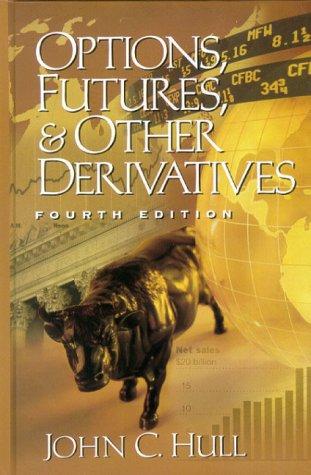Question
1. Use the attached balance sheet and income statement to compute the required financial ratios for 2012. Use 360 for the number of days in
1. Use the attached balance sheet and income statement to compute the required financial ratios for 2012. Use 360 for the number of days in a year. The computations for 2011 are already done for you.
Current ratio_________________________
Quick ratio__________________________
Inventor turnover____________________
Average Collection Period_____________
Total asset turnover__________________
Net profit margin____________________
Operating profit margin_______________
Times Interest Earned_________________
Debt/Net Worth Ratio_________________
Return on Equity ratio__________________
2. Using the computed financial ratios from question 1, compare Grounds Keepers performance from 2011 to 2012. Address what areas the company has improved and what areas it has not
A.)Liquidity
B.) Activity / turnover / efficiency
C.) Profitability
D.) Leverage / use of debt / solvency
3. If you were the CEO of Grounds Keeper, what area(s) would you concentrate on to improve the performance of the company?
4. Define the terms capital structure, cost of capital, and working capital. Focus on how they are different from each other and impact both profitability and risk.
5. Determine Grounds Keepers capital structure and working capital.
6. If Grounds Keeper has a required rate of return on its long-term debt of 9% (before taxes) and a required rate of return on its common stock, a tax rate of 40%, what is its weighted average cost of capital (WACC) for 2012? How could Grounds Keeper lower its WACC? (HINT: you will need to look at the balance sheet to determine the weight of debt to equity.
7. What are the advantages to Grounds Keeper in using money market instruments as financing? How does this related to financing net working capital?
8. Explain what Grounds Keeper should consider when deciding whether to issue stocks or bonds? Answer using at least 3 different characteristics comparing and contrasting stocks and bonds.
9. Define money market instruments; list at least one type of security that would be considered a money market instrument. What are the advantages to Grounds Keeper in using money market instruments as financing? What are the disadvantages?
| Grounds Keeper | ||
| Consolidated Balance Sheets | ||
| (Dollars in thousands) | ||
| 2012 | 2011 | |
| Assets | ||
| Current assets: | ||
| Cash and cash equivalents | 78,240 | 44,395 |
| Receivables | 399,891 | 340,062 |
| Inventories | 844,737 | 736,677 |
| Total current assets | 1,322,868 | 1,121,133 |
| Fixed assets, net | 1,244,384 | 889,613 |
| Other long-term assets | 1,048,537 | 1,187,141 |
| Total assets | 3,615,789 | 3,197,887 |
| Liabilities and Stockholders Equity | ||
| Current liabilities: | ||
| Accounts payable | 309,222 | 319,465 |
| Accruals | 201,017 | 145,240 |
| Notes payable | 9,748 | 6,669 |
| Total current liabilities | 519987 | 471374 |
| Long-term debt | 834574 | 814298 |
| Total liabilities | 1,354,561 | 1,285,672 |
| Stockholders equity: | ||
| Common stock, $0.10 par value: | 15,268 | 15,447 |
| Additional paid-in capital | 1,464,560 | 1,499,616 |
| Retained earnings | 781400 | 397152 |
| Total stockholders equity | 2,261,228 | 1,912,215 |
| Total liabilities and stockholders equity | 3,615,789 | 3,197,887 |
| Grounds Keeper | |||||
| Consolidated Statements of Operations | |||||
| (Dollars in thousands except per share data) | |||||
| 2011 |
| |||
| Net sales | 3,889,426 | 2,642,390 |
| ||
| Cost of sales | 2,589,799 | 1,746,274 |
| ||
| Gross profit | 1,299,627 | 896,116 |
| ||
| Selling and operating expenses | 481,493 | 348,696 |
| ||
| General and administrative expenses | 219,010 | 187,016 |
| ||
| Operating income | 599,124 | 360,404 |
| ||
| Interest expense | 22,983 | 57,657 |
| ||
| Income before income taxes | 576,141 | 302,747 |
| ||
| Income tax expense | 212,641 | 101,699 |
| ||
| Net Income | 363,500 | 201,048 |
| ||
|
| |||||
| Basic income per share: |
| ||||
| Average shares outstanding | 154,933,948 | 146,214,860 |
| ||
| Earnings per common share | 2.35 | 1.38 |
|
| Current Ratio | Current assets/ Current liabilities |
| Quick Ratio | Current assets inventory/ Current liabilities |
| Inventory Turnover | Cost of goods sold/ Inventory |
| Receivables Turnover | Sales/ Accounts receivables |
| Average Collection Period | Receivables/ Sales per day |
| Fixed Asset Turnover | Sales/ Fixed assets |
| Total Asset Turnover | Sales/ Total Assets |
| Gross Profit Margin | Revenues - Cost of goods sold/ Sales |
| Operating Profit Margin | Earnings before interest and taxes/ Sales |
| Net Profit Margin | Net income/ Sales |
| Return on Total Assets | Net income/ Total assets |
| Debt/Net Worth Ratio | Total Debt/ Total Equity |
| Times-Interest-Earned | Operating Income/ Interest expense |
| Return on Equity | Net income/ Total equity |
Step by Step Solution
There are 3 Steps involved in it
Step: 1

Get Instant Access to Expert-Tailored Solutions
See step-by-step solutions with expert insights and AI powered tools for academic success
Step: 2

Step: 3

Ace Your Homework with AI
Get the answers you need in no time with our AI-driven, step-by-step assistance
Get Started


